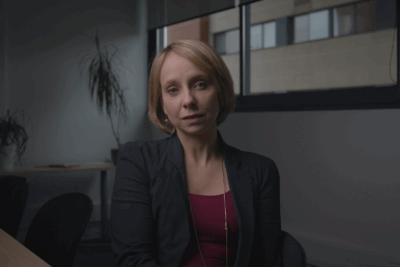30th June 2025
Extended and virtual reality (XR/VR) technologies are moving beyond pilot projects and into the day-to-day reality of clinical care. In the latest episode of EIT Health Healthcare Hackers, a panel of experts from start-ups, hospitals, and research institutions explored how immersive technology is being embedded into frontline healthcare. Rather than speculating about distant futures, the discussion focused on practical integration—highlighting the very real challenges and opportunities of embedding XR into clinical workflows.
Integration Is Everything – And It Must Start Early
Despite a growing number of XR applications—from surgical planning to cognitive therapy—their success depends on usability, affordability, collaboration, and ongoing technical support. “Much of what happens in VR and XR today is, by nature, trailblasing,” said Hossein Jalali, CTO and co-founder of Virtuleap, a Portuguese start-up developing virtual reality solutions for cognitive assessment, training and monitoring. “What we’re doing right now is quite literally opening the road.”
As Dr Oscar Mayora, head of digital health research at Fondazione Bruno Kessler emphasised, “Integration is fundamental.” Without a clear strategy, the initial ‘wow effect’ fades quickly, and the technology risks becoming a short-lived experiment. Jalali agreed: “The opportunity is clearly there, but success isn’t just about that initial ‘wow’ moment. What truly matters is building a system that enables people to come back, engage repeatedly, and integrate the experience into something meaningful.”
Paediatric surgeon Dr Krzysztof Bronowicki from the Institute of Mother and Child in Warsaw shared his own clinical perspective:
“As a paediatric surgeon, after my first experience, I’d like to use this technology as much as possible. It significantly enhanced my spatial awareness – I could see more, and plan better, both during the pre-operative phase and during surgery itself.”
Representing the industry viewpoint, Mafalda Oliveira of Medtronic Portugal stressed that “it’s not always about the technology itself – it’s about the system’s readiness to embrace it.” Market entry and adoption can be slow and complex. The focus shouldn’t lie solely on the solution itself or its price tag, but rather on the value it delivers. “When we align the clinical data with the outcomes, we can genuinely justify the usability and adoption of these technologies.”
Medical Staff at the Core: Support, Trust, and Cost
The successful adoption of XR in healthcare hinges on close collaboration between medical staff, industry, and research institutions. “Healthcare, research institutions, and companies often operate with different priorities,” noted Oscar Mayora. “If we don’t communicate effectively, we risk working in silos. What we really need is a shared language and a commitment to identifying common ground.”
Echoing the call for collaboration, Dr Bronowicki emphasised the deeper, human-centric value of XR adoption. “In my view, introducing these tools helps reduce patients’ fear of the unknown. It creates a sense of reassurance and transparency. More broadly, it fosters greater trust in the medical team and increases the psychological comfort of both patients and their families,” he said.
He also pointed to the vital role of practical support from industry: “Support from companies is absolutely essential. Companies must recognise that doctors are the most important link in this chain – and they need tailored assistance throughout the process.”
From an economic standpoint, Dr. Bronowicki added “If procedures can eventually be performed more efficiently, it could also mean fewer complications, and ultimately lower hospitalisation costs. That economic dimension is crucial.”From the industry side, Oliveira reaffirmed the importance of close support: “There’s always a learning curve when introducing any new medical device, so our job is to be present, responsive, and supportive.” She cited the collaboration with Deepsen– a French start-up offering immersive 360-degree VR content for use in anxiety and pain management – as an example of effective co-creation. “Imagine undergoing orthopaedic surgery while awake, and being immersed in a completely different environment from the operating theatre – the impact is both remarkable and deeply reassuring.”
Dr Bronowicki added that a more system-level approach could help accelerate adoption across hospitals: “It would be beneficial if companies offering extended reality technologies took a more proactive approach in engaging with hospital management and governing bodies. That would help make these technologies more widely accessible across the healthcare system – and perhaps, in some cases, new regulatory frameworks will be needed to support that.”
Research Institutions: The Empathetic Bridge
Dr Mayora described the unique role of research centres in the XR ecosystem: “We don’t sell a product – our role is to develop solutions that are both clinically relevant and commercially viable.” He stressed the need for what he calls an “empathetic approach”: thinking like clinicians to solve real problems, while understanding business logic to make solutions scalable. “Research centres should position themselves as bridges between innovation and implementation – working closely with industry and healthcare to bring meaningful change.”
This also requires structural thinking. “This isn’t about finding a single solution for a single company,” Mayora added. “It’s about establishing a framework that can assess the validity and market readiness of various technologies – allowing us to measure, compare, and ultimately support their adoption within healthcare systems.”
Strategic Planning Over Hype
Challenges such as tight budgets, lack of infrastructure, and the newness of immersive technologies still stand in the way of widespread adoption. “. For solutions to succeed, they must move from the margins to the mainstream. And that requires time, structure, and buy-in”, noted Hossein Jalali.
EU-funded initiatives such as VR Health Champions are helping bridge this gap by providing shared environments for testing, feedback, and collaborative validation. As panel moderator Michael Barngrover from XR4Europe noted, XR must shed its “special project” label and become as routine as a stethoscope or a monitor. It needs to become trivial.
While large-scale adoption is still evolving, the results to date are encouraging. XR tools have been used in cardiac procedures, rehabilitation, and cognitive assessments, often exceeding expectations. “The initial feedback has always been much better than what we expected,” said Mafalda Oliveira. “People—especially older patients—are much more open to trying it and adapting to it than we assumed.”
For XR and VR technologies to gain lasting clinical traction, they must be seamlessly integrated into existing workflows. Beyond the initial novelty, long-term success will depend on simplicity, trust, and alignment with everyday clinical practice. As Hossein Jalali puts it, “We just have to build the trust and the mindset of integration — not disruption.”
Looking forward, the key will be cross-sector alignment. Healthcare providers, companies, and researchers must work as one – with open communication, a common vocabulary, and shared priorities. If immersive solutions are to become sustainable components of modern medicine, their integration must be intentional, inclusive and iterative.
EIT Health and the EDIT-B consortium transform bipolar disorder diagnosis with groundbreaking blood test

Discover this life-changing project today.
Three EIT Health innovators nominated for EIT Awards

Meet our three EIT Award nominees.
Hospital Clínic study reinforces patient participation as key to digital health innovation

New work published in Journal of Medical Internet Research.